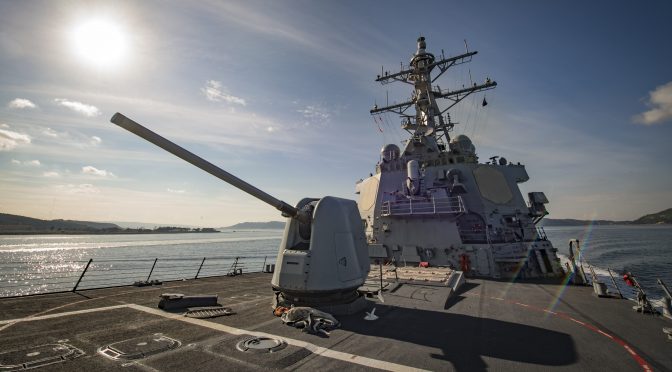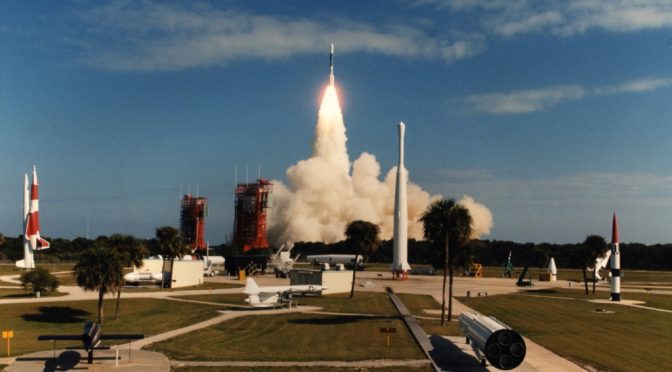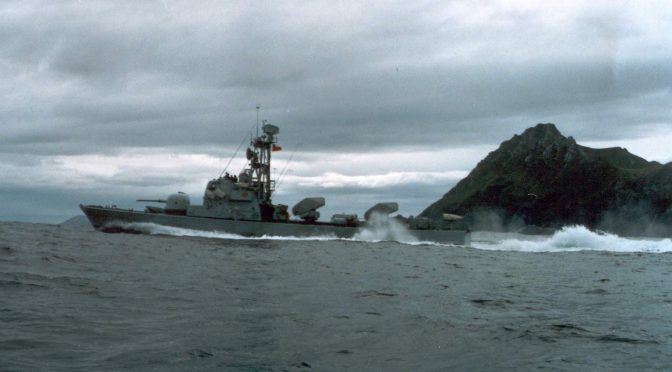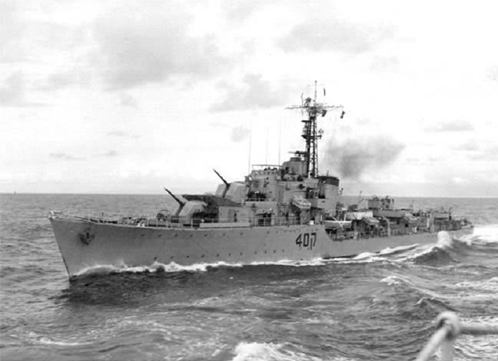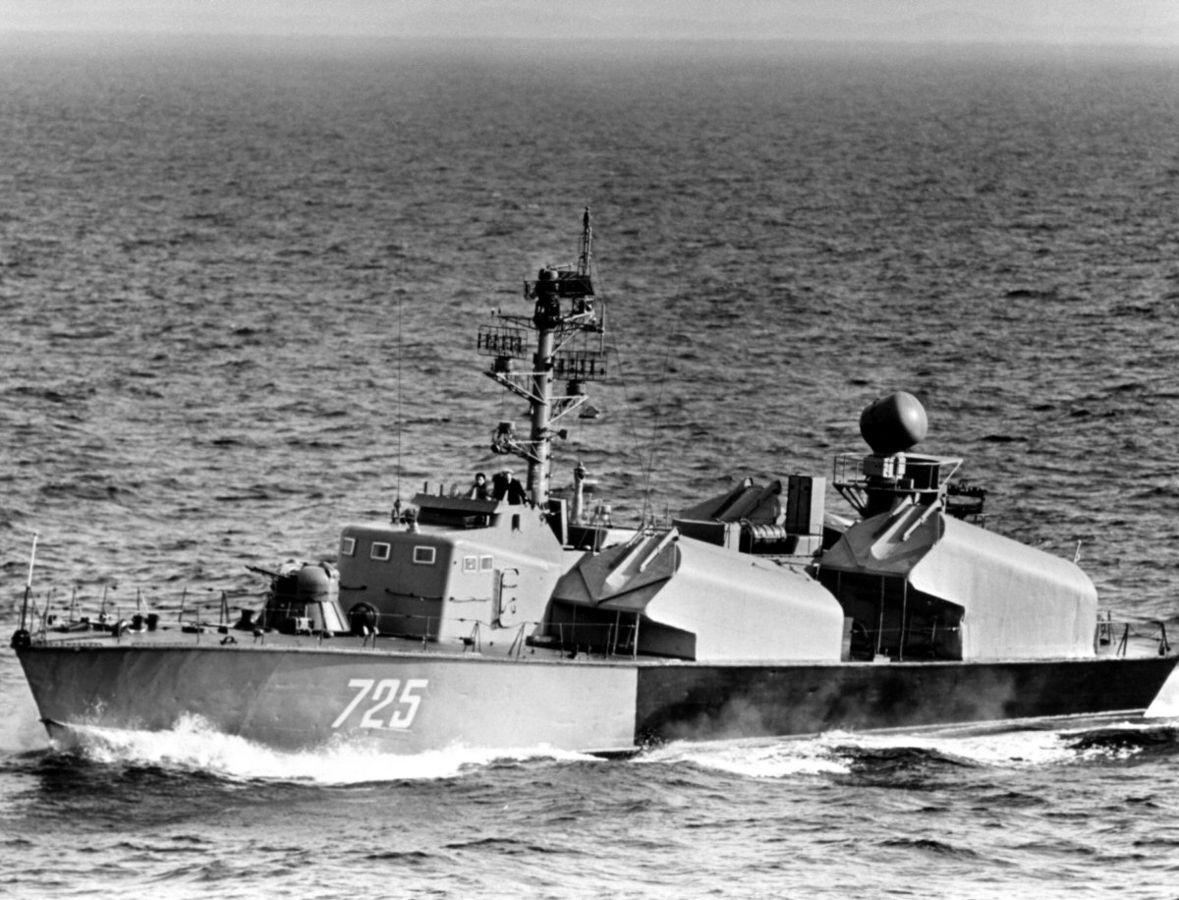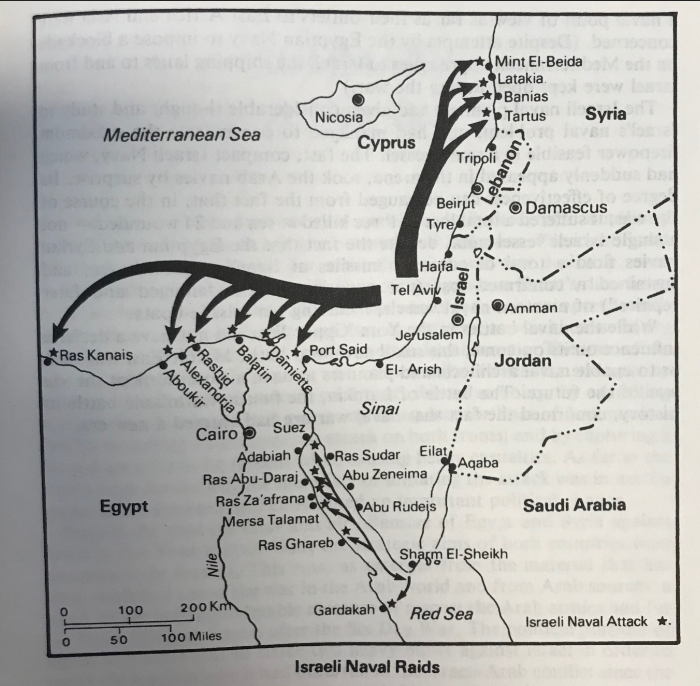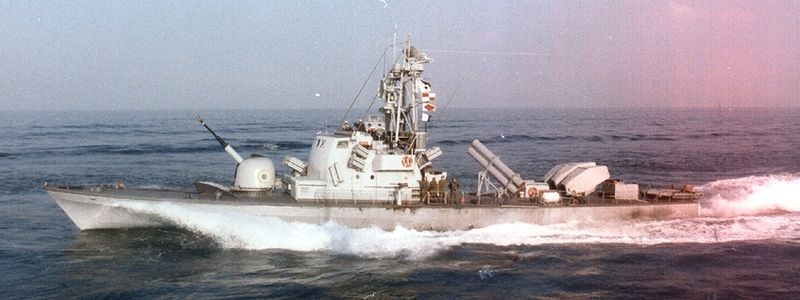“It shall be the policy of the United States to have available, as soon as practicable, not fewer than 355 battle force ships.”
-Section 1025, Para (A) of the National Defense Authorization Act for FY2018 (FY18 NDAA)
“Battle force ships are commissioned United States Ship (USS) warships capable of contributing to combat operations, or a United States Naval Ship that contributes directly to Navy warfighting or support missions, and shall be maintained in the Naval Vessel Register” –SECNAVINST 5030.8C
By Keith Patton
During the Reagan administration, it was the policy goal of the United States to build a 600-ship Navy. That goal came very close to being realized, but the end of the Cold War and the “peace dividend” resulted in a rapid contraction of U.S. battle force ship count. This is not to say the U.S. Navy became less powerful since current U.S. multi-mission destroyers are far more capable than their 80s predecessors, but the fleet can be in far fewer places at once and is less casualty tolerant.
In 2015, the Navy’s force level goal was 308 ships. In 2016, this was raised to 355. This policy goal was codified by Congress in the FY18 NDAA. Currently, the Navy has 286 battle force ships, or only 80 percent of its own and now the Congressionally stated requirement. Pursuant to FY18 NDAA, the Navy produced a report to Congress with a plan for achieving a 355-ship force level after 2050, but included options to achieve this level by 2030.
What if world circumstances or political decisions forced the U.S. to look at achieving a 355-ship Navy far sooner than in 11 to 30 years? Possibilities range from how to stretch or improve what already exists, to more radical notions of foreign warship procurement, armed merchantmen, and development of a U.S. Navy foreign legion type force.
Assumptions
Some of the current and proposed policies for fleet building are built on numerous assumptions. One, that a 355-ship Navy is necessary. This is codified in the FY18 NDAA, but some the forthcoming ideas will stretch the definition or purpose of a 355-ship Navy. Second, that the Navy is in a technological competition and simply adding hulls to the battle force count is insufficient. These hulls must be capable of adapting to emerging technology rather than simply using what is available today. However, some of the offered ideas focus on using current or less capable designs to reach 355 ships. Third, that it is feasible for the Navy to fund a commensurate increase in personnel and weapons procurement. This is also impacted by the type of ships procured. This assumption is not directly challenged, but is fundamental to manning and arming the fleet constructed. Finally, that the political will exists to champion these changes, which could threaten established programs, industrial bases, or voting blocks.
Stretching What We Have
The Department of Transportation’s Maritime Administration has already been told by the Navy that, in the event of a major conflict, there will be insufficient ships to escort a sealift effort to Asia or Europe. Recalling Operation Drumbeat, or the “happy times” of the German U-boat force off the U.S. Atlantic coast in 1942, this is very concerning. 23 merchants were sunk off the U.S. coast by just five Type IX U-boats. For perspective, that is equivalent to 40 percent of the current ship inventory of the Maritime Administration’s Ready Reserve Fleet, which is tasked with transporting U.S. forces in wartime. During U-boat operations, 22 percent of the tanker fleet was sunk, and 232 ships total in seven months. This is more than the entire U.S. merchant marine fleet today. Raising the U.S. battle force ship strength to provide escorts for vital transport and logistics vessels would seem a logical first step.
A quick way to preserve and grow battle force ships is to stop decommissioning vessels and to execute service life extensions on them instead. These would include younger Los Angeles-class SSNs and DDGs. The FY18 NDAA already prohibits the Navy from retiring Avenger-class MCM (Sec 1046). By extending the life of Arleigh Burke-class destroyers to 45 or 50 years, the Navy can reach its desired large surface combatant end strength by 2029. However, this is still 10 years away. Even with extending the lives of Los Angeles-class SSNs, the Navy does not reach its desired attack submarine count until after 2048. Stopping the bleeding is not sufficient to reach 355 in less than a few decades,if the Navy needs to find more hulls in the next few years.
The Navy also could draw upon a limited quantity of warships in Naval Inactive Ship Maintenance Facilities (NISMF) including two aircraft carriers, two cruisers, two destroyers, a score of frigates, amphibious assault ships, and auxiliaries. Appendix 6 of the Navy report to Congress on shipbuilding notes 66 battle force ships being retired, dismantled, or sunk in the next five years. Reactivating those ships would almost instantly reach the 355 vessel goal. A 355-ship fleet, therefore, might be quickly met by delaying decommissioning and returning old warships to active duty
There is a significant downside to both extending the life of existing ships and returning old ships to service. First, there is the upfront cost of nuclear refueling and updating combat systems. Some cost savings could be made, for instance not using the catapults or arresting gear of the old carriers, making them STOVL carriers for helicopters, Ospreys, and F-35Bs (and saving significant manning and maintenance costs) or not updating the combat systems of the Oliver Hazard Perry-class frigates and only using them for low-end counter-piracy or counter-narcotics missions. However, this would severely limit the combat capabilities of the ships to the battle force. They may be able to handle a low end mission and free more expensive assets for higher-threat theaters, but they would not be suitable for great power conflict. Upgrading them with modern combat systems would further increase their cost. Additionally, these old vessels were decommissioned for a reason. Taking old vessels back into service introduces assets that are less capable in modern warfare due to limited growth margins and worn out hulls, and adds significant maintenance costs to stretch their service for a few more years. Long term, this seems far less bang for the buck than procuring new, modern combatants with growth margins for emerging technology. It also violates the planning assumption that the Navy’s new hulls will need growth room for emerging technology to field new weapons and systems.
Building Smarter, Better and Faster
The Navy currently receives new warships from five large and two smaller private shipyards. The shipbuilding industry is not at capacity in the U.S. To achieve a 355-ship in a decade would require almost doubling new ship production.1 Additionally, buying more warships in a smaller interval of time drives down unit cost. The Congressional Research Service (CRS) estimated 10 percent savings by doubling the production rate of combatants.2 The same report also estimated 5-10 percent savings by using multiyear procurement. By energizing the U.S. shipbuilding industry, the 355 battle force ship count can be achieved sooner.
However, U.S. shipbuilding can only achieve a 355-ship Navy slowly. Upon funding, it takes two years for long lead time components for a SSN to be produced, and five to six years for construction. Additional workers and production space would be needed before the five to six year construction phase began. Even with immediate funding, therefore, a decade might elapse before additional warships and specifically SSNs could join the fleet.
The Government Accountability Office 2018 report on Navy Shipbuilding does not give much room for optimism on meeting shipbuilding time or costs. It notes “construction during the last 10 years have often not achieved their cost, schedule, quality, and performance goals” and that the Navy has spent more on shipbuilding but has fifty fewer ships in the inventory than was planned in its 2007 shipbuilding plan.
Another consideration is that building more of existing designs does not allow margins for growth. The DDG-51 Flight III design does not have the growth margin or electrical generation to support projected future weapons, nor crew reductions. Procuring more DDG-51s at an accelerated rate provides a short-term advantage, but leaves the Navy with a large number of hulls that consume manpower and can’t adapt efficiently as new systems are developed. Designing a new combatant takes years, and this will delay the date when the Navy can achieve a 355-ship force. Simply building existing or projected future designs faster does not offer much hope of meeting a 355-ship battle force quickly.
Another consideration is the boom and bust effect of sudden surges in shipbuilding. Even if a 355-ship Navy could be built in three to five years, what would befall the warship industry in the following years? Once the goal was reached, unless there was a new, higher goal set, shipyards would have to massively trim the workforces they hired to support a surge in construction. A stable growth plan is more economical and sustainable than one based on sudden surges and decelerations. It would also be more politically palatable to the Congress that authorized it.
Increasing the Firepower of What We Have
If ships cannot be built or brought back into service in a timely or economical way, could there be a way to increase the fleets combat ability until a 355 ship force is achieved? This is “breaking the mold” of the first assumption – that a 355-ship navy is necessary. Can a more powerful force of what we have suffice in the interim until a true 355-ship fleet can be achieved?
The SSGN conversion of four SSBNs gave the Navy four stealthy, high-capacity, long-range, strike platforms. Each can be equipped with up to 154 cruise missiles and other payloads, more than a cruiser, and offers far more offensive capability when one considers that many of the cruiser’s tubes are filled with defensive weaponry. What if the Navy converted the remaining 14 Ohios? This would provide an 18 percent increase in missile tubes (or firepower) available to the battle force, when the 355 battle force count goal is a 20 percent increase in hulls. This seems to close the capability gap, for strike anyway, with what is available. The question is, would 18 Ohio SSGNs roaming the oceans provide a greater conventional deterrent, and an effective platform in worst case A2AD environments than more of other ships? For high-end warfare and strike, likely yes. But there are many missions a submarine does not do well, like air and ballistic missile defense, presence, and maritime interdiction. The SSGNs would also be a stop gap since they are aging out. To replace the Ohio SSGNs as they age out, the new Columbia-class SSBN could be repurposed as SSGN as well.
This would dramatically alter U.S. nuclear posture by removing the SSBN leg of the triad. However, this could be mitigated to an extent by the already announced plan to put nuclear-tipped Tomahawks back on U.S. submarines. As hypersonic or smaller intermediate range ballistic missiles became available, nuclear armed versions of these weapons on all the SSGN would provide a survivable nuclear response to underpin US deterrence. The Navy could also consider spreading nuclear Tomahawks or successor systems across more than just the submarine fleet. Instead of a few, high capacity SSBNs, the naval leg of the triad would become a dispersed force of ships and subs with a few weapons each, much as it was during the Cold War.
While far less survivable than a submarine, missile tubes could also be added to existing combat logistics force ships or even amphibious assault ships. The San Antonio-class LPD was originally designed with a 16-cell Mk 41 VLS forward. The Navy has considered back fitting it. However useful, the entire fleet of LPDs outfitted with VLS would yield fewer missiles than two SSGNs, and be less survivable. Another concept would be to take the San Antonio follow on and build them as missile ships with large radars and extensive VLS capability. Huntington Ingalls has produced a model of this concept, with twice the missile firepower of a U.S. cruiser. This would allow the Navy to close the firepower gap between a 355-ship Navy and now with fewer than 355 ships.
While these ideas do not produce a 355-battle force ship fleet any sooner, they do produce a fleet that is more survivable, with more firepower, sooner, than the official ship building plans call for. The cost is shifting and ceding some capability in nuclear deterrence and amphibious lift. Each of these would be controversial alone. Even together, they may be insufficient should the U.S. feel it needs a 355 battle force ship equivalent sooner rather than later.
Change in Deployment Methodology/Theater Specific Ships
While not directly increasing the battle force ship count, changing Navy deployment methodology could allow the force to be more capable as the size grows. This methodology is similar to the report published by the Center for Strategic and Budgetary Assessments as part of the Navy’s fleet architecture study. This report suggested the Navy be divided into two forces. First was a deterrence force, sub-divided among COCOMs, with the capacity to provide prompt, high capacity fires to punish an adversary should their existence fail to deter them. These ships would be tasked to support a particular COCOM rather than CONUS-based forces rotating between them. In low-threat SOUTHCOM, LCS and reactivated Oliver Hazard Perry-class frigates, Coast Guard, or newly designed ships could focus on low-end missions and free up high end warships for other theaters. In CENTCOM, the ships assigned would focus on FAC/FIAC threats and air and missile defense. Ships assigned to PACOM or EUCOM would focus on high end missions. Ships could be built, manned, and trained around these priorities, in contrast to current operations where ships focus on all warfare areas and multiple AORs, risking becoming jacks of all trades but masters of none. While this may have been adequate during a low naval threat period, with the return of great power competition, specialization may be needed again. The SSGN conversions in particular might be outstanding vessels for the deterrence force in EUCOM and PACOM. Difficult to detect and counter, and with two or three perhaps on station at any time able to bring high capacity fires against an adversary’s aggression, the could depart the theater to reload and join the maneuver force.
Theater-specific ships could also be homeported in their AOR, reducing transit time and acting as a force multiplier. CRS estimated it takes 42 additional warships to keep eight additional ones on station in the Mediterranean if home ported in CONUS.3 If homeported in the Mediterranean, only 14 warships would be required. This could reduce the need for a 355-ship force, or allow those 28 warships to be tasked to other missions.
The second part of the fleet would be a maneuver force consisting of a multiple carrier strike groups and larger amphibious vessels that would relieve and replace the deterrence force and provide sustained combat power. By keeping the multi-carrier maneuver force together and away from the immediate area of crisis, it could conduct more high-end training and not be at risk in the initial stage of conflict. This would also mesh with the enduring Mahanian desire to keep a large portion of the fleet concentrated and surge capable. This contrasts with the current deployment methodology where ships frequently shift COCOM and tasking, and carriers don’t consistently operate together as they may have to in wartime to provide 24/7 effects and protection.
All of these ideas, deterrence/maneuver force, theater-specific ships, or greatly increasing overseas homeporting, breaks the mold of U.S. deployments and acquisition. However, they fail to increase the battle force ship count. They simply hold the dream of making the existing ships more efficient, available, or capable for specific missions.
Change in Battle Force Ship Definition
Another idea would be to change SECNAVINST 5030.8C, specifically enclosures (1) and (2) to assign more vessels from the category of Auxiliary to Combatant. The combatant category, which counts toward the 355-ship goal, already includes afloat forward staging bases, cargo and ammunition vessels, expeditionary sea bases, fast transports, fleet tugs, surveillance ships, and towing and salvage vessels. Adding in oceanographic research vessels and survey ships (both similar to surveillance ships), transport oilers and aviation logistics support (both similar to combat logistics ships) and high speed transports (very similar to expeditionary fast transports) could immediately add vessels to the battle force ship count with the stroke of a pen.
Doing this, while breaking the mold in the definition of a battle force ship, seems to be going against the spirit and intent of Congressional policy and U.S. Navy desire to increase force strength. While it could be argued some of the ships listed as auxiliaries provide very similar support to ships listed as “Fleet Support” or “Expeditionary Support,” reclassifying is simply smoke and mirrors while not increasing capability. Even if weapon systems were added to these platforms to make them more plausible as “battle force ships” the increase in Navy power and capability would be far less than battle force ships as listed under current definitions.
CDR Patton is deputy chairman for the U.S. Naval War College’s Strategic and Operational Research (SORD) Department. SORD produces innovative strategic research and analysis for the U.S. Navy, the Department of Defense, and the broader national security community. CDR Patton was commissioned in 1995 from Tufts University NROTC, with degrees in history and political science and has served four tours conducting airborne nuclear command and control missions aboard the US Navy E-6B Mercury aircraft, and two tours as Tactical Action Officer (TAO) and Combat Direction Center Officer (CDCO) aboard the carriers USS KITTY HAWK and USS NIMITZ.
The opinions and ideas above do not necessarily represent those of the Department of Defense, U.S. Navy, or the Naval War College. The ideas expressed here do not necessarily reflect those of the principal author either. They were drawn from the Breaking the Mold II workshop held at the U.S. Naval War College with invited participants from military, industry, government and academic institutions. The workshop was held under the Chatham House Rule, so these ideas will not be attributed to their originator. Some ideas were specific enough that they are not included here because the idea itself might identify the originator and violate the Chatham House rule.
References
1. Congressional Budget Office “Costs of Building a 355-Ship Navy”, April 2017 pg.9
2. Ronald O’Rourke, “Options and Considerations for Achieving a 355-Ship Navy” July 25, 2017. Pg. 3
3. Ronald O’Rourke, “Options and Considerations for Achieving a 355-Ship Navy” July 25, 2017. Pg. 11
Featured Image: DARDANELLES STRAIT (Jan. 19, 2019) The Arleigh Burke-class guided-missile destroyer USS Donald Cook (DDG 75) transits the Dardanelles Strait, en route to the Black Sea, Jan. 19, 2019. (U.S. Navy photo by Mass Communication Specialist 2nd Class Ford Williams/Released) 190119-N-JI086-050

